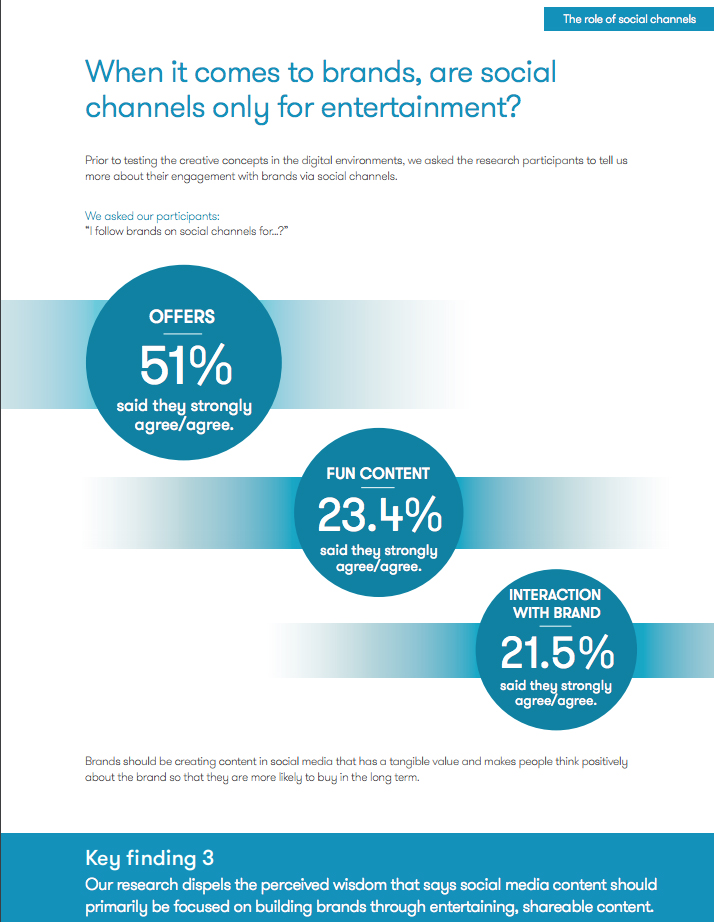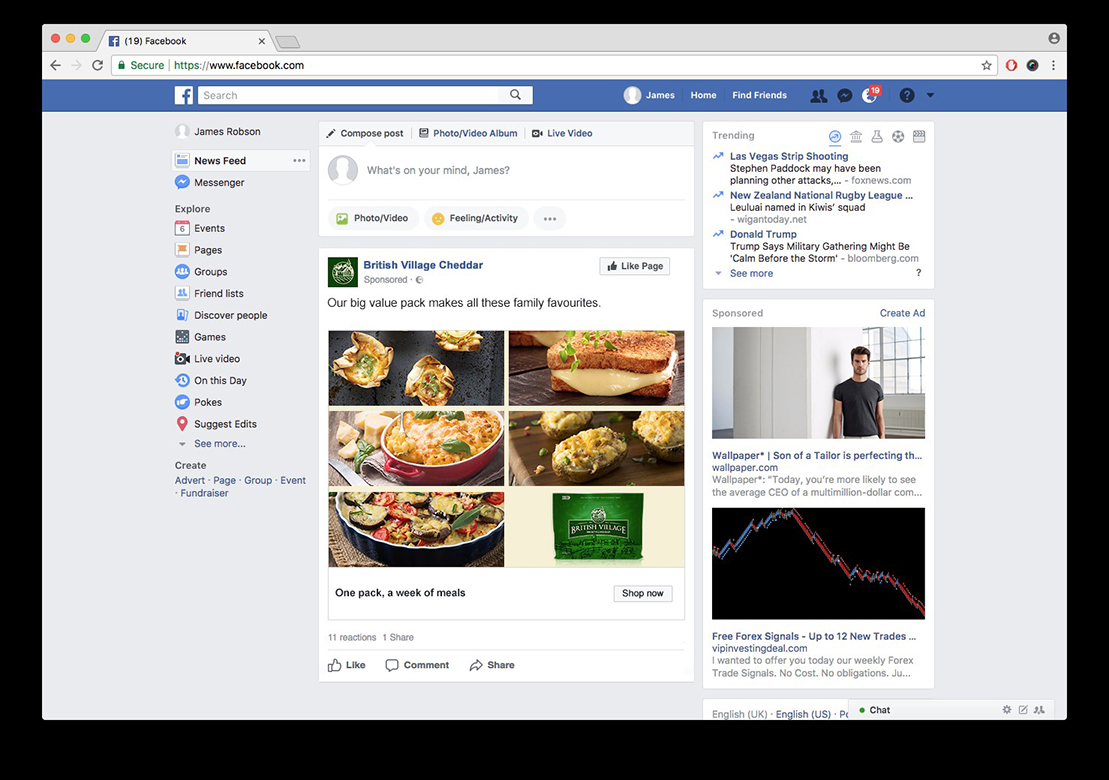For brands aiming to target consumers via social media, the tone they use for their message is vital. Fresh research is explored here by Andrew Watts, who discusses content marketing methods and shows which social media sales triggers work best – and why.
Despite being a crucial part of the marketing mix, there is still an air of ‘try-it-and-see’ surrounding metrics and strategy. Very few marketers can claim a social strategy grounded in science, with the majority tending to adhere to certain basic principles when it comes to usage. For example, we’ve all been taught that engagement is what matters and entertaining content should be prioritised over sales messaging. It seems obvious, but it’s also a dangerously out-of-date approach – and one that brand marketers should consider ditching from their social media strategies.
All marketing activities, social included, are about driving sales. Whether directly or indirectly, immediately or delayed, via one channel or another. And modern consumers are more social media-savvy than ever before. They’re consuming tremendous amounts of content online, from a growing variety of sources, as well as scrolling faster and faster. KHWS’s latest research results, conducted in partnership with Durham University, demonstrate that entertainment might not be what they’re looking for from brands, after all. Instead, to stand out, it’s about achieving a delicate balance of entertaining and commercial messaging.
Of the 1,306 online shoppers surveyed, 51% said they follow brands on social media for offers. That’s more than double the 23% who follow brands for entertaining content. That’s a statistic that can’t be ignored if brands are to meet their ambitious commercial targets. But of course, there is no one-size-fits-all approach to this, particularly in relation to different product categories.
Social media sales triggers – emotional or serious?
 Though these findings contradict the assumption that content must be entertaining on social, the relationship between emotion-led content and the main message is the real learning opportunity for marketers as they have a parallel effect on one another. Framing price to communicate value works through automatic decision-making processes, but it’s still hard to gain cut-through on social media thanks to the overwhelming amount of similar messaging. So, while creatively framing price addresses the key Sales Trigger (Brand Budgeting), it’ll be most effective when paired with entertaining content that triggers an emotional response, which will be more readily encoded through a consumer’s automatic decision-making processes. If you take away either sort of messaging, a brand’s social activity will be just like their competitor’s and, as a result, unsuccessful. Combining messaging that works with multiple Sales Triggers will make brands more salient in a crowded market.
Though these findings contradict the assumption that content must be entertaining on social, the relationship between emotion-led content and the main message is the real learning opportunity for marketers as they have a parallel effect on one another. Framing price to communicate value works through automatic decision-making processes, but it’s still hard to gain cut-through on social media thanks to the overwhelming amount of similar messaging. So, while creatively framing price addresses the key Sales Trigger (Brand Budgeting), it’ll be most effective when paired with entertaining content that triggers an emotional response, which will be more readily encoded through a consumer’s automatic decision-making processes. If you take away either sort of messaging, a brand’s social activity will be just like their competitor’s and, as a result, unsuccessful. Combining messaging that works with multiple Sales Triggers will make brands more salient in a crowded market.
Our partnership with Durham University focuses on increasing our understanding of behavioural science, in a way that makes it usable for marketers. It’s all about unlocking sales online by truly understanding consumer behaviour. Of course, converting sales via social channels isn’t easily done, but behavioural approaches to marketing creation holds the key for brands seeking to successfully navigate their way through this complex landscape.
The first step is to look at, and decode, the unconscious mental processes we all undertake when making decisions. These are known as heuristics. We call the ones most relevant to purchasing behaviour Sales Triggers.
The online shoppers who were surveyed for our most recent results looked at 27 creative messaging concepts and nine neutral control messages in relation to three hypothetical FMCG brands (cheese, chocolate and tea).
When analysing reactions, it is possible to identify which Sales Triggers are in play and marketers can learn to tailor their messages accordingly – whether they relate to product price, its provenance or something else entirely.
It’s about making sure you’re providing consumers with the type of information they are looking for and are presenting it in the right way, given that particular context.
Entertaining content still has a role to play, but it should be featured alongside sales activation elements, not instead of them. Get your messaging right and it’s possible to build affinity and drive sales at the same time.
Have an opinion on this article? Please join in the discussion: the GMA is a community of data driven marketers and YOUR opinion counts.




 Though these findings contradict the assumption that content must be entertaining on social, the relationship between emotion-led content and the main message is the real learning opportunity for marketers as they have a parallel effect on one another. Framing price to communicate value works through automatic decision-making processes, but it’s still hard to gain cut-through on social media thanks to the overwhelming amount of similar messaging. So, while creatively framing price addresses the key Sales Trigger (Brand Budgeting), it’ll be most effective when paired with entertaining content that triggers an emotional response, which will be more readily encoded through a consumer’s automatic decision-making processes. If you take away either sort of messaging, a brand’s social activity will be just like their competitor’s and, as a result, unsuccessful. Combining messaging that works with
Though these findings contradict the assumption that content must be entertaining on social, the relationship between emotion-led content and the main message is the real learning opportunity for marketers as they have a parallel effect on one another. Framing price to communicate value works through automatic decision-making processes, but it’s still hard to gain cut-through on social media thanks to the overwhelming amount of similar messaging. So, while creatively framing price addresses the key Sales Trigger (Brand Budgeting), it’ll be most effective when paired with entertaining content that triggers an emotional response, which will be more readily encoded through a consumer’s automatic decision-making processes. If you take away either sort of messaging, a brand’s social activity will be just like their competitor’s and, as a result, unsuccessful. Combining messaging that works with 



Leave your thoughts